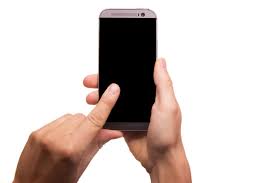For many people, the working principle and application scenarios of cell blockers are already familiar, but little is known about their power consumption. This article will introduce the power consumption of cell blockers and related factors in detail.
Basic composition of cell phone jammers:
Phone signal jammers consist of the following main parts:
Signal transmitter: the core component that generates interference signals.
Antenna: used to transmit interference signals to cover a specified range.
Control circuit: used to adjust and control the intensity and frequency of interference signals.
Power supply: provides energy for the entire device.
These components work together to achieve shielding of mobile phone signals.
Factors affecting the power consumption of cell blockers
1. Transmission power
The main function of a cell blocker is to transmit interference signals, which requires a certain amount of power. The higher the transmission power, the larger the signal coverage range, and the corresponding power consumption is also greater. Generally, high-power jammers are used to cover larger areas, such as large conference rooms or examination rooms, while low-power jammers are used to cover smaller areas, such as single rooms or small conference rooms.
2. Working frequency band
Different mobile phone networks (such as 2G, 3G, 4G, 5G) use different frequency bands for communication. Phone signal jammers need to cover these frequency bands to block all types of mobile phone signals. The more frequency bands covered, the greater the power consumption, because each frequency band requires a separate jamming signal.
3. Use environment
The use environment also has a certain impact on the power consumption of the jammer. In an open indoor environment, the signal propagation is better and the required transmission power is lower; in an environment with more obstacles or thicker walls, in order to ensure the interference effect, a higher transmission power is required.
4. Working mode
Some phone signal jammers have intelligent adjustment functions, which can automatically adjust the transmission power according to environmental changes to optimize power consumption. For example, when it detects that the surrounding mobile phone signal is strong, the jammer will increase the transmission power, and when the mobile phone signal is weak, it will reduce the transmission power to save power.
Energy-saving tips

Although the power consumption of the phone signal jammer has been optimized as much as possible during design, in actual use, we can still take some measures to further save energy:
1. Reasonable planning of usage time
According to specific needs, reasonably arrange the working time of the jammer. For example, in the examination room, the jammer only needs to be turned on during the exam, and it can be turned off at other times to save energy.
2. Regularly maintain the equipment
Regularly check and maintain the cell blocker to ensure that it works in the best condition. Timely cleaning of dust and dirt on the equipment and maintaining good heat dissipation can improve the working efficiency of the equipment and reduce unnecessary energy consumption.
3. Use the intelligent adjustment function
If the jammer has an intelligent adjustment function, it is recommended to enable this function so that the device can automatically adjust the transmission power according to the actual environment. This can not only optimize the interference effect, but also effectively save electricity.
Through a comprehensive understanding of the power consumption of the cell blocker, we can effectively control energy consumption while ensuring the interference effect. This not only helps to extend the service life of the equipment, but also reduces unnecessary energy waste and makes a contribution to environmental protection.












